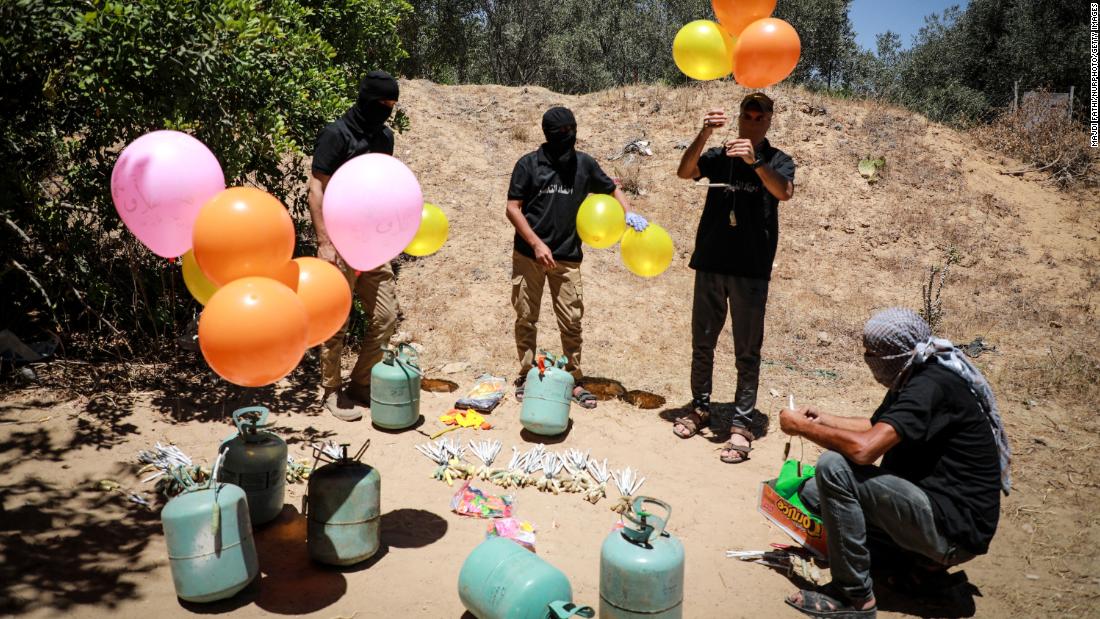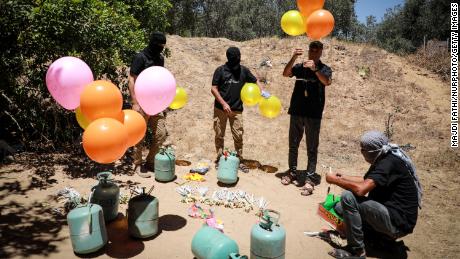Officials said at least 20 fires were started Tuesday by the balloons. Palestinian media reported the retaliatory Israeli strikes caused material damages, with no casualties reported.
More balloons were launched Wednesday, starting at least four more fires, Israeli fire and rescue authorities said.
While militants have been sending balloons into Israel for years, the Israeli military’s response of airstrikes in Gaza is a new escalation. Israeli officials said it was part of a message to Hamas that any provocation will be met with force.
Former finance minister Israel Katz, who was in the cabinet during the most recent conflict with Gaza last month, said that after that operation, “we decided to change the rules.”
Here’s what we know about the balloons and how they play into the current tensions.
What are incendiary balloons?
They’re relatively simple contraptions — helium balloons that often look like children’s birthday party decorations, attached to explosives or devices that are pre-emptively lit on fire.
Militants launch the balloons from Gaza and winds from the Mediterranean Sea help propel them into Israeli territory.
What are they designed to do?
Since 2018, more than 10,400 acres have been burned in Israel from flying incendiary devices, not including Tuesday’s fires, an Israel Defense Forces spokesperson said.
So far authorities have not reported any casualties from such incendiary devices.
Why balloons instead of rockets this time?
The balloons are a cheap way for militant groups in Gaza to send a message to Israel, without provoking the full Israeli military retaliation that often occurs when rockets are fired from the coastal enclave.
The balloons are easily constructed and require little set up to launch, compared to rockets which are expensive and time-consuming to produce. So far, the balloons rarely if ever cause injuries.
Tuesday’s balloons were likely floated in response to the Israeli government’s decision to allow a provocative right-wing flag march to proceed in Jerusalem.
The flag march is an annual parade where mostly nationalist Jewish groups walk through the Old City of Jerusalem carrying Israeli flags to celebrate Israel gaining control of the Western Wall during the 1967 Six-Day War. The march often sparks tensions with Palestinian residents of the Old City.
On Tuesday, 33 Palestinian protesters were injured, including by stun grenade, rubber bullets and live fire — with six evacuated to hospital — following clashes with Israeli security forces around east Jerusalem, the Palestinian Red Crescent Society said.
Where does Israel’s new leader stand on balloons?
After last month’s 11-day conflict, Israeli officials indicated such acts like incendiary balloons would be met with greater force, something that appears to now be happening.
This story has been updated.



